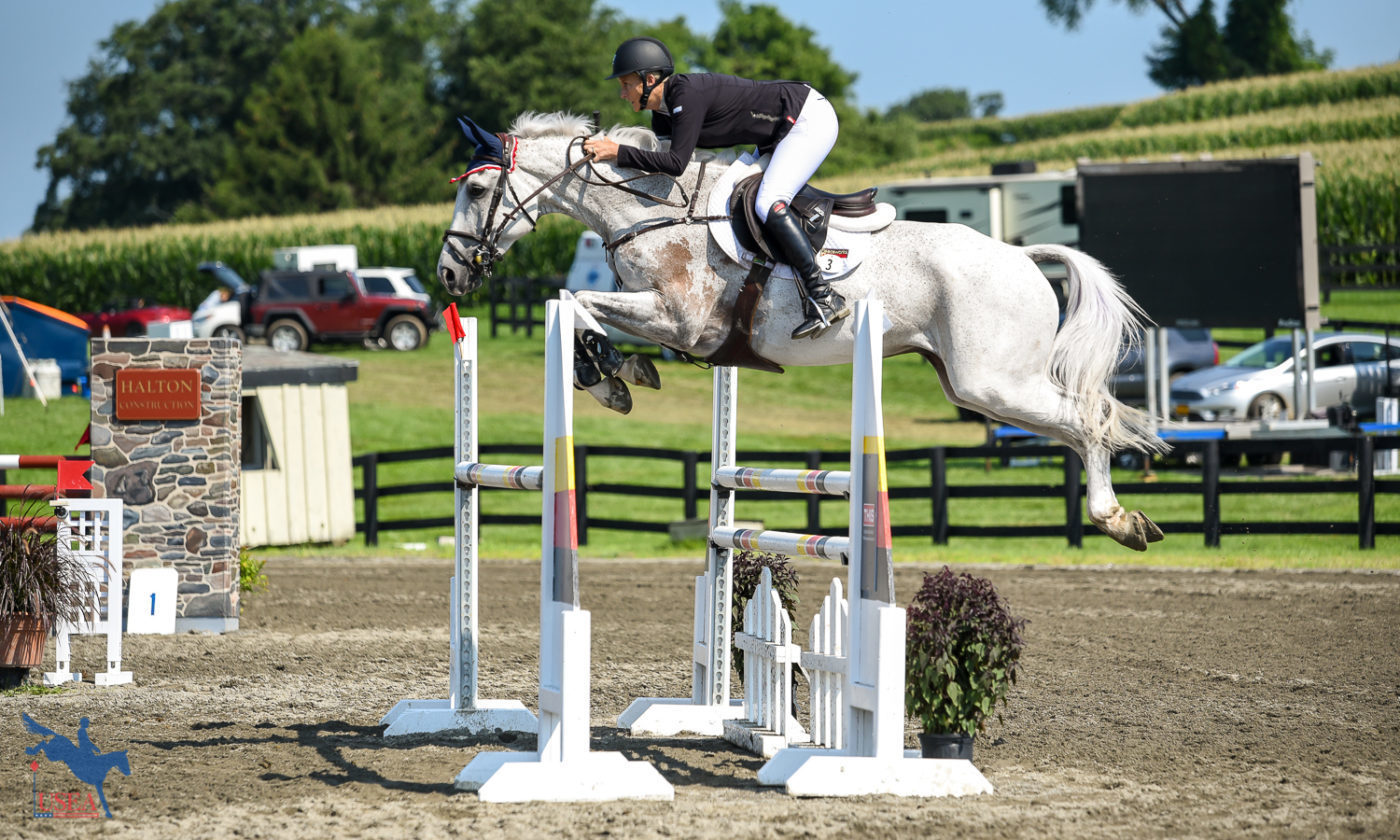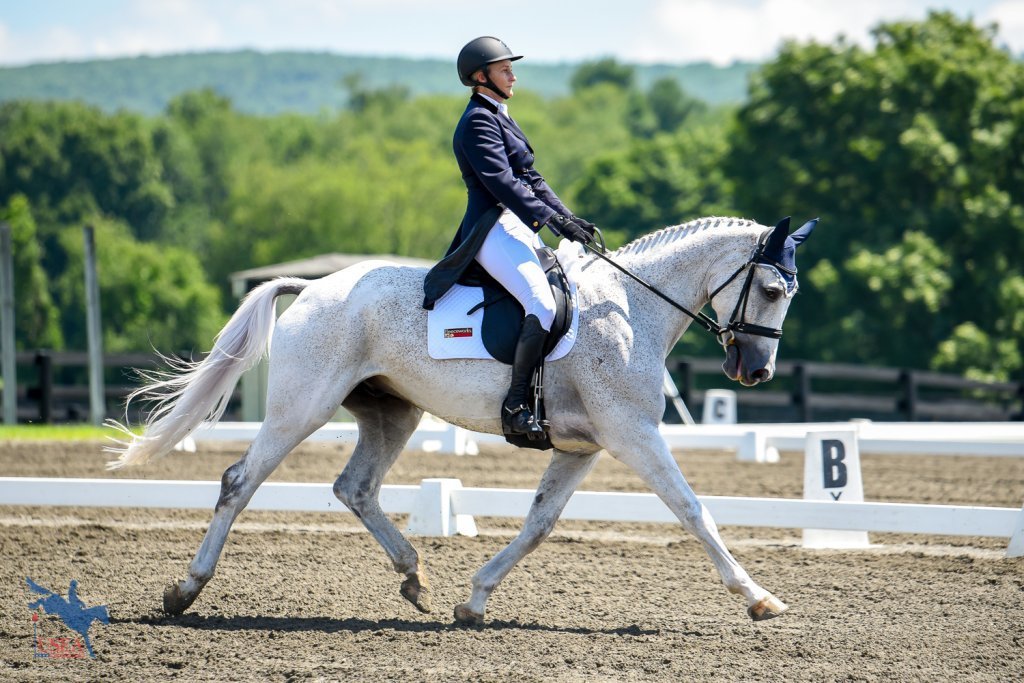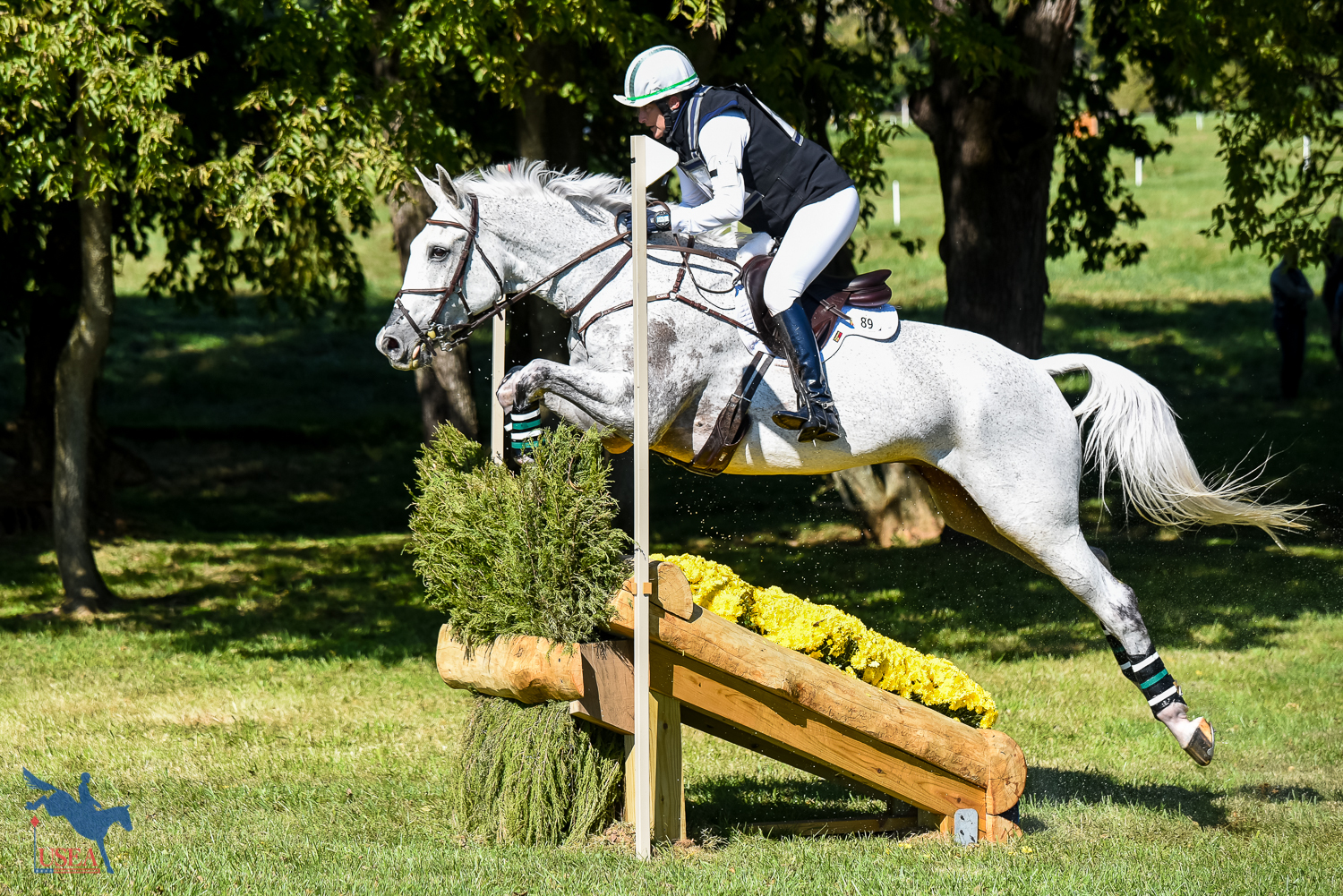Renew Your USEA Membership for the 2023 Season Today LEARN MORE

When it comes to eventing, it’s not just all about the horse’s fitness. The rider’s fitness is equally important for safe and successful riding. For graduate “A” Pony Clubber and five-star eventer Sara Kozumplik Murphy, out-of-the-saddle fitness work is a fundamental part of her routine.
Six days a week, Kozumplik Murphy adds something extra outside the saddle to her routine. “It is important as a rider if you've been doing this your whole life,” Kozumplik Murphy stated. “It is not enough just to ride horses. When you've been doing something for your entire life, you're strong and it is easy for you to do. You need to do other things to challenge your body.”
Three of those days, Kozumplik Murphy challenges her body with Orangetheory fitness classes, which combine work on the treadmill, row machine, and in the weight room for a mix of cardiovascular exercise and strength training. The other three days a week, Kozumplik Murphy does Pilates with fellow eventer Sharon White.

“I think the Pilates has been the best thing for improving my riding,” Kozumplik Murphy observed. “There's not a specific exercise - it is all beneficial. I do the cardio and strength work [at Orangetheory] to simply be fitter and stronger in general. Pilates is very good for flexibility and body awareness and body and core strength. Orangetheory is to keep cardiovascularly fit and also has some strength training with the rower and weights.”
There is an inherent risk in the sport of eventing, and Kozumplik Murphy has had her share of injuries. Up until the last few years, most of her injuries have been soft tissue – not broken bones. “Previously I took some hard knocks which only showed up on an MRI,” she described. “The past four years I've had a lot of bone breakage. I did a tibial fracture when I was kicked in the knee in 2017. In 2018, I broke my back and my neck.”
“As bad as the neck and back injury were from everyone's perspective and the surgeries (broke T6, shattered T7, and broke T8), I found the knee was harder to recover from because you needed to be immobile for quite a while,” she continued. “The back surgery [I was] up the next day to prevent pneumonia. Both injuries took a really long time to heal – it takes about a year to recover from a serious injury. I couldn't ride for six months after my back injury, but I was able to move around so I gained a lot less weight and was able to work out.”

For Kozumplik Murphy, the key to maximizing the benefits of out-of-the-saddle exercise is doing something you wouldn’t normally do. “I was never a runner, I hated it - but I needed to do something a little different to be the way I want to be,” she said as an example. “Orangetheory was perfect for me with interval training because you spend a lot of time on the treadmill. I could walk up a cliff for hours and am strong in a lot of ways, but you need to do something different that you enjoy and that is different from your everyday things.”
Kozumplik Murphy also observed that body image pressure in the equestrian industry can be detrimental to your health and fitness. “There's a lot of pressure in this industry across the board to be very thin,” she said. “Quite a lot of riders don't eat enough and they don't heal as quickly when they get injured. Even though sometimes I have more weight than I want to, I don't have that problem. You are going to get injured, especially if you do this at the highest level, and you need to eat to heal. It is important to find ways to get proper nutrition rather than saying you're just not going to eat.”
The biggest thing that Kozumplik Murphy takes away from her out-of-the-saddle training? “Feeling better.”
If you have a unique fitness routine, the USEA wants to hear from you! Email Jessica Duffy at JDuffy@useventing.com with your fitness routines, stories, or advice. To read other articles about rider fitness, click here.